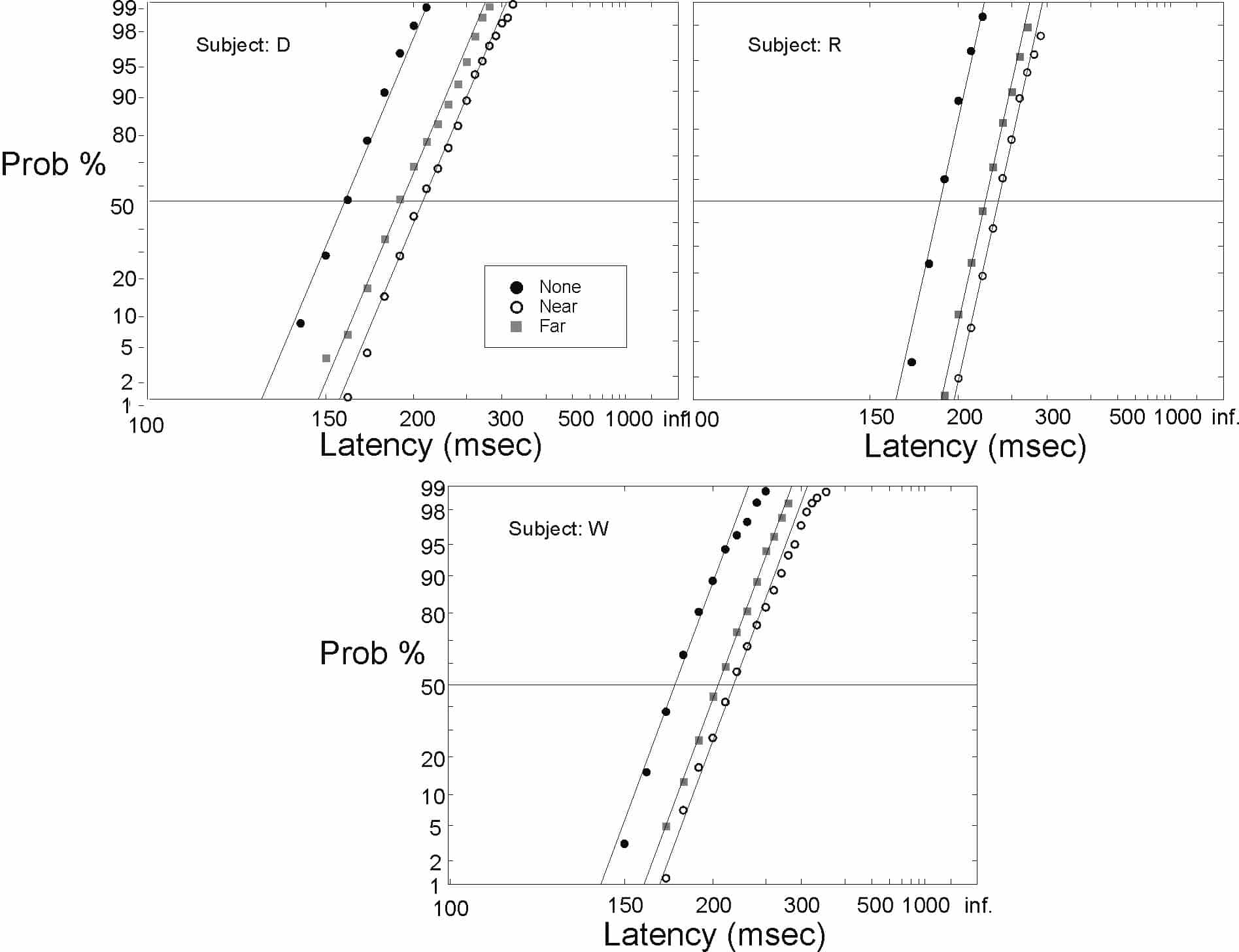In the LATER model of saccadic and other latencies, neural decision signals rise, in response to information from a stimulus, from an initial level representing prior probability to a threshold at which action is initiated (Carpenter & Williams, 1995). When more than one target is presented, the decision signals race against one another, with a saccade being made to the winner. Neurophysiological and behavioural evidence suggests that such competing units inhibit one another, so that it takes longer to decide between two targets than it takes to make a saccade to one. A previous study using a countermanding task suggested that this competition may affect µ, the mean rate of rise of the decision signal across trials (Hanes and Carpenter, 1999). Here we test this prediction directly, presenting distractors at the same time as targets.
Saccadic eye movements were recorded, with informed consent and local ethical committee approval, from six participants in a step task. In control trials, subjects made a saccade to a green LED target presented randomly 3.7° to right or left of a central fixation LED, simultaneously extinguished. In test trials, randomly interleaved with the controls, the target was accompanied by a red distractor LED presented simultaneously at a different location. A participant typically performed around 2000 trials in an experiment. In one experiment (paradigm 1) distractors were presented either ipsilaterally or contralaterally at an eccentricity of 5.5°. In a second experiment (paradigm 2), distractors were always contralateral, either near (5.5°) or far (9.2°) from the fixation target. Saccadic latencies were measured and analysed. In paradigm 1, contralateral distractors increased latency by around 20-50 msec; ipsilateral distractors caused no significant increase in latency, but in 3 of the 6 subjects induced a small but significant (Student’s unpaired t test, P < 5 %) decrease; similar differences have been reported by Walker et al. (1997). In paradigm 2, contralateral distractors increased latency, causing the distributions to move in a parallel fashion on reciprobit plots (Fig. 1): near distractors were more potent than far. Likelihood analysis showed an average support of 55.6 per subject across both experiments and all subjects for the hypothesis that, in terms of the LATER model, distractors do indeed affect the mean rate of rise of the decision signal rather than its starting point.

